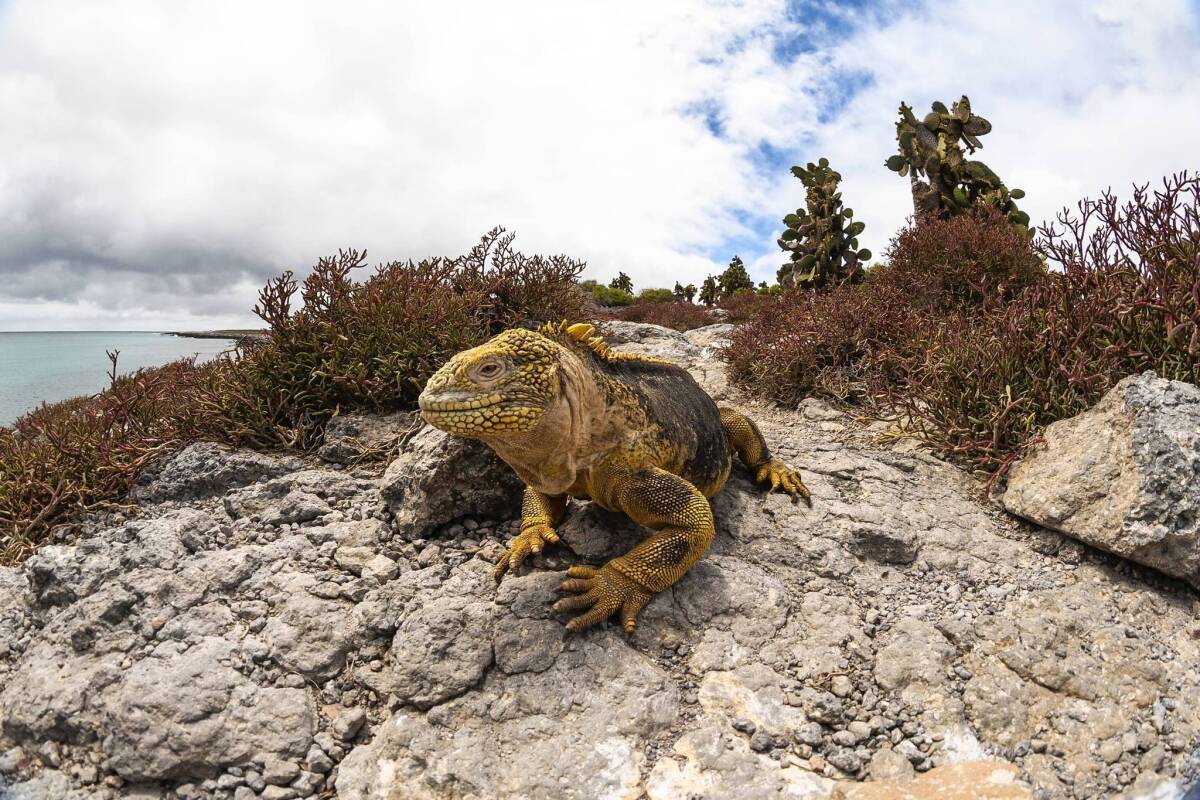Global warming poses most immediate threat to tropics, study finds

- Share via
WASHINGTON — Polar bears and penguins are usually the first creatures that come to mind when considering the likely victims of global warming, but a new study finds that fish, coral and other inhabitants of the tropics will be the first to take the brunt of climate change.
An analysis of global temperatures over the last 150 years combined with forecasts generated by 39 independent models concludes that animals in areas closest to the equator will be forced to cope with temperatures that are outside their historical range in as little as about 15 years.
“The new minimum temperature of the future is the old maximum temperature of the past,” said Ryan Longman, a graduate student in geography at the University of Hawaii in Manoa and coauthor of the study published in Thursday’s edition of the journal Nature.
Although organisms all over the world will have to find ways to adapt to higher temperatures, animals in the tropics are particularly vulnerable, researchers said. Conditions in the tropics stay in a narrower range than in other places on the planet, so it takes a smaller shift to put creatures in peril, said biologist Eric Post, director of the Polar Center at Penn State.
“Changes will be coming soon,” said study leader Camilo Mora, an assistant professor of geography at the University of Hawaii in Manoa. “Within my generation, whatever climate we were used to will be a thing of the past.”
The average location on Earth could experience a substantially different climate by 2047 if human beings continue to do little to rein in emissions of heat-trapping gases, Mora and his colleagues found. Even if nations took a more aggressive approach to reducing greenhouse gases, annual average temperatures would still shift out of their previous normal range by 2069, they wrote.
The team also examined conditions for 54,000 locations around the world. Under a business-as-usual scenario, Los Angeles will see permanent changes to its climate by 2048. If strong measures were taken to curb emissions, Angelenos would have an extra 31 years to adapt, the study found.
Among other major U.S. cities, Washington’s climate will change radically by 2047 if the world continues on its current course. If serious climate action is taken soon, the change would be delayed until 2071.
The shift to consistently warmer temperatures poses a considerable threat to thousands of plant and animal species that will have to move, adapt or face extinction, experts warn. Most aspects of human society will face grave disruptions as well, from agriculture to water security to public health.
The inevitability of the global shift to hotter climates should not be seen as a cause for inaction, warned the study’s authors and other climate change scientists. Rather, it highlights the urgency of adopting measures that would give people and other organisms better odds of coping with their new, hotter environs, they said.
“The optimistic way to look at this is that taking steps to reduce emissions is buying us time — for species to adapt, for human societies to change and to come up with technological advancements,” said study coauthor Abby Frazier, also a graduate student in geography at the University of Hawaii. “It lets us put on the brakes. If you were about to get into an accident, wouldn’t you want it to happen at 20 mph rather than 80?”
Mora said the study arose from the realization that although there were many studies looking at the absolute change in global temperature, there was a gap in knowledge regarding the timing of such shifts.
Many studies have focused on the great temperature increases expected in the Arctic. But the new study’s conclusion that the tropics would be first to experience unprecedented temperature changes surprised scientists who weren’t involved in the research.
The swift changes expected for the tropics “immediately raises all sorts of alarms bells,” said Stuart Pimm, an expert on the tropics and professor of conservation ecology at Duke University. “The greatest variety of life and biodiversity and the poorest people in world live in the tropics, and the new climate shifts will be outside their parents’ and grandparents’ experience.”
Pimm added: “The past is no longer prologue.”
As climate change has begun to make traditional habitats less hospitable for various species, they have moved to cooler latitudes or higher altitudes. But in the tropics, there are far fewer opportunities for plants and animals to do that, Pimm said.
“Given that, there’s a very, very severe worry about what this will do to species in the tropics,” he said.
The authors of the Nature study collected data on the distribution of about 344,000 species around the world. Some are better equipped than others to adapt to new climate conditions.
For instance, animals with shorter life spans will have more generations pass through a given time period, said Scott C. Doney, director of the Woods Hole Oceanographic Institution’s Ocean and Climate Change Institute in Massachusetts. That gives them more chances to evolve and adapt to new conditions.
“We really need to look at the regional scale and individual groups of organisms to get a sense of who’s going to lose out,” he said.
More to Read
Sign up for Essential California
The most important California stories and recommendations in your inbox every morning.
You may occasionally receive promotional content from the Los Angeles Times.














